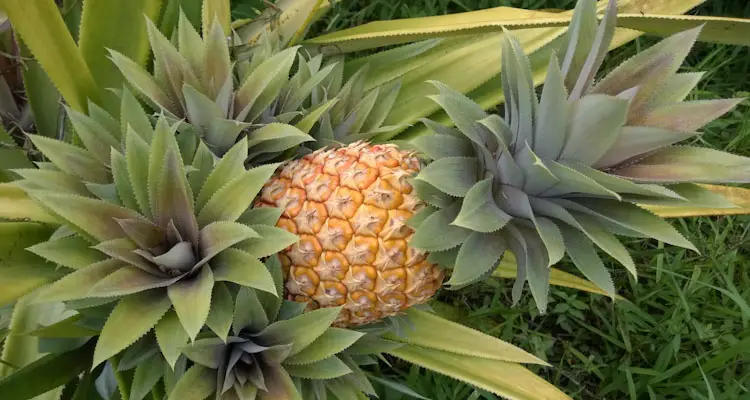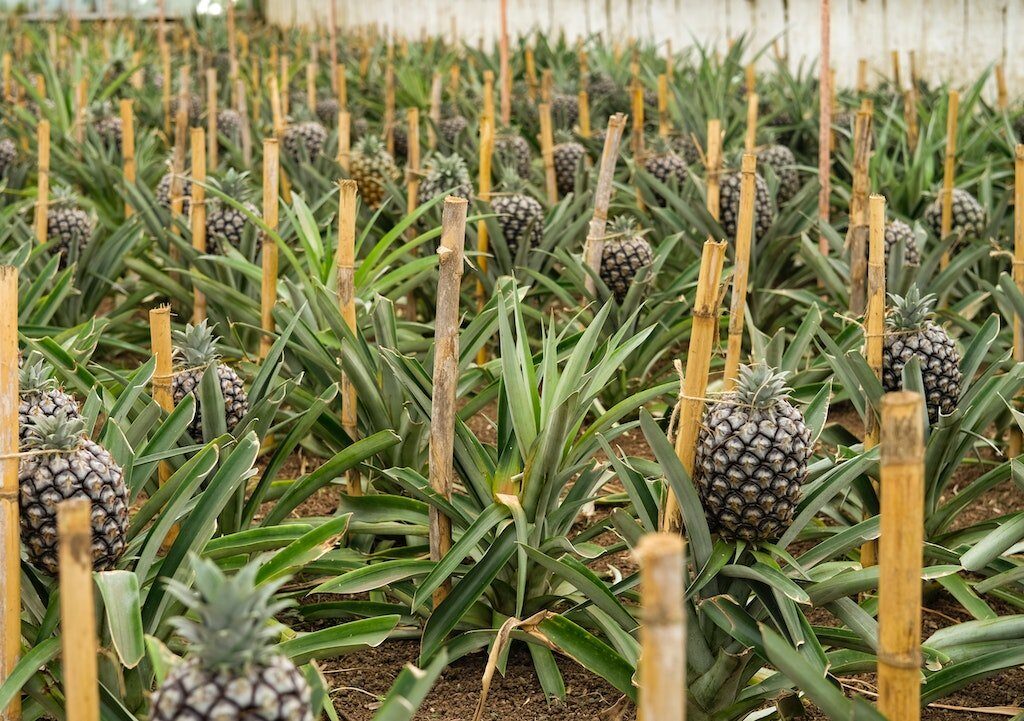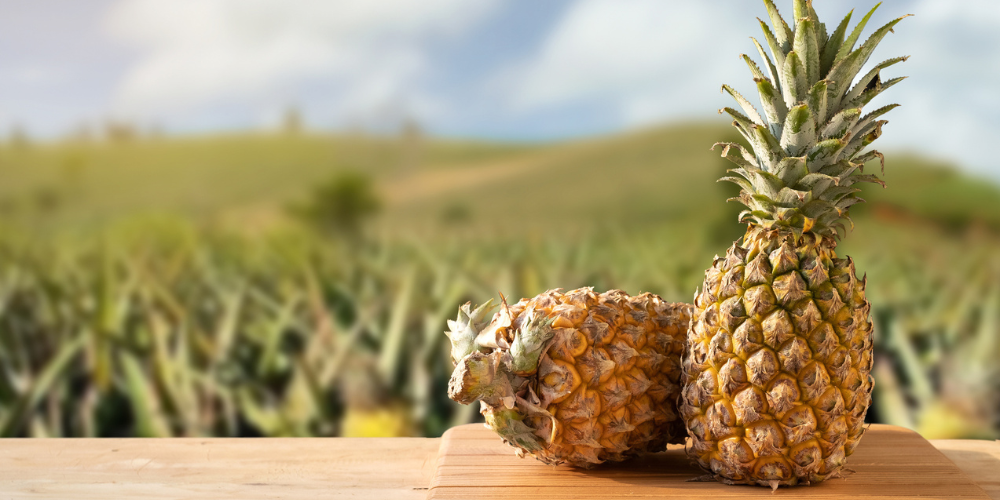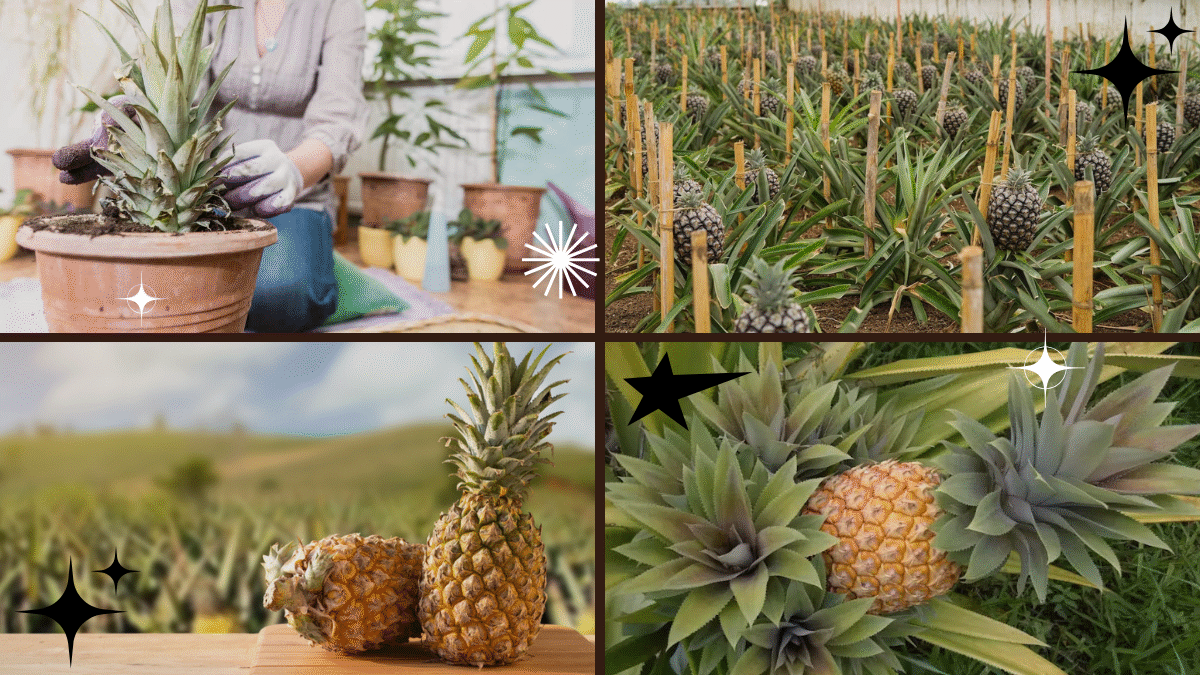When you think of pineapples, you probably imagine tropical beaches and sunny plantations. But did you know you can actually grow this exotic, spiky fruit right inside your own home? That’s right — with a little patience and the right care, you can successfully grow a pineapple plant indoors. Not only does it make for a striking houseplant with its long, arching leaves, but if you treat it well, it might even reward you with a sweet, homegrown fruit.
Whether you’re a seasoned gardener or a curious beginner, this comprehensive guide will walk you through everything you need to know about growing a healthy, thriving pineapple plant indoors.

Why Grow Pineapple Indoors?
There are several good reasons to grow a pineapple plant indoors:
- Tropical Aesthetic: Its dramatic, sword-like leaves add a bold, exotic touch to your space.
- Air Purification: Like many houseplants, pineapples help purify the air.
- Low Maintenance: Pineapples are hardy and forgiving, requiring minimal attention.
- Edible Reward: With proper care, you could grow your own sweet, tangy pineapple.
And let’s face it — it’s just plain cool to say you’ve grown a pineapple at home!
Understanding the Pineapple Plant
Pineapples (Ananas comosus) are part of the bromeliad family and are native to South America. Unlike most fruits, a pineapple plant produces only one fruit at a time, and it can take 2-3 years to mature indoors. But don’t let the wait discourage you — the plant’s bold appearance and uniqueness make it a worthwhile houseplant, fruit or no fruit.

Choosing the Right Pineapple Variety
While you can grow any variety indoors, smaller or dwarf types like ‘Sugarloaf’ or ‘Queen’ are particularly well-suited for container growing due to their compact size.
However, one of the most popular and accessible ways to start your pineapple plant is by using the crown (top) of a store-bought pineapple.
How to Grow a Pineapple from a Crown
Here’s a step-by-step guide to growing your indoor pineapple plant:
1. Select a Healthy Pineapple
Look for a fresh pineapple with green, healthy leaves in the crown and a firm, ripe fruit. Avoid ones with wilted or yellowing leaves.
2. Prepare the Crown
- Grasp the leaves firmly and twist the crown from the fruit.
- Peel away the lower few inches of leaves to expose the base and small root buds.
- Let the crown dry for 1-2 days to prevent rot when planting.
3. Root the Crown in Water (Optional)
While you can plant it directly into soil, rooting in water allows you to watch the roots develop.
- Place the crown in a glass of water with just the base submerged.
- Keep it in a sunny window and change the water every few days.
- In 2-3 weeks, roots should appear.
4. Plant the Crown
- Choose a 6-8 inch wide pot with drainage holes.
- Use a well-draining potting mix (a cactus or bromeliad mix works well).
- Plant the rooted crown or the dried one directly into the soil, covering the base.
- Water lightly.

Ideal Conditions for Indoor Pineapple Plants
To grow a healthy indoor pineapple plant, you need to recreate its tropical environment as much as possible.
Light
Pineapples love sunlight. Place your plant in a bright, sunny window that receives at least 6-8 hours of indirect light daily. A south-facing window is ideal. If your home lacks natural sunlight, consider using a grow light to supplement.
Temperature
Pineapples prefer warmth. Keep your plant in a room where temperatures stay between 65°F to 85°F (18°C to 29°C). Avoid exposing it to temperatures below 60°F (15°C).
Soil
Use a well-draining soil mix, ideally a combination of potting soil, sand, and perlite or a commercial cactus mix. Avoid heavy, moisture-retentive soils.
Watering
Pineapples are drought-tolerant and dislike soggy roots.
- Water when the top 1-2 inches of soil feel dry.
- Water the soil evenly and pour a little water into the center rosette of leaves (the cup) occasionally.
- During winter, reduce watering as the plant’s growth slows down.
Humidity
While not overly demanding, pineapples appreciate a bit of extra humidity. Mist the leaves occasionally or place a humidifier nearby, especially in dry indoor climates.
Fertilizing
Feed your pineapple plant every 4-6 weeks during the growing season (spring through summer) with a balanced liquid fertilizer diluted to half strength. Avoid over-fertilizing in fall and winter.
Repotting Your Pineapple Plant
As your plant grows, you may need to repot it into a larger container. Do this when:
- The plant becomes root-bound.
- The soil degrades and loses its drainage quality.
Use fresh, well-draining soil, and move the plant to a slightly larger pot in spring.

Encouraging Your Pineapple to Flower and Fruit
Getting your indoor pineapple plant to flower and fruit takes patience — typically 2-3 years. But you can try a few tricks to encourage blooming:
- Ethylene Gas Method: Place your plant inside a plastic bag with a ripe apple for 3-5 days. Apples emit ethylene gas, which can stimulate flowering.
- After this, return it to its sunny spot and resume regular care.
Once a flower stalk appears, it takes about 6 months for the fruit to mature.
Common Problems and How to Fix Them
Even though pineapples are tough, they’re not immune to issues:
- Yellowing Leaves: Often caused by overwatering or poor drainage. Let soil dry out before watering again.
- Brown Leaf Tips: Can result from low humidity or underwatering. Mist leaves occasionally and check soil moisture.
- Pests: Watch for mealybugs, spider mites, or scale insects. Wipe them off with a damp cloth or use insecticidal soap.
Harvesting Your Indoor Pineapple
When your pineapple fruit turns golden yellow and smells sweet, it’s ready to harvest.
- Twist the fruit gently to detach it from the plant.
- Allow it to ripen at room temperature for a day or two if needed.
Pro tip: After harvesting, you can plant the crown again to grow a new plant!
Can Pineapple Plants Regrow After Fruiting?
After producing a fruit, the main plant will gradually die, but not before producing “pups” or offshoots around its base. You can separate these pups and plant them individually to start new pineapple plants.
Final Thoughts
Growing a pineapple plant indoors is a unique and rewarding gardening project. While it may take a few years to produce fruit, the striking foliage, tropical vibe, and the simple joy of nurturing an exotic plant make it well worth the effort.
With the right light, warmth, and a little patience, your pineapple plant will thrive as a beautiful houseplant — and maybe one day, you’ll get to savor your very own homegrown pineapple.
So next time you’re at the grocery store, pick up a fresh pineapple, save the crown, and start your indoor pineapple-growing adventure!





Leave A Comment